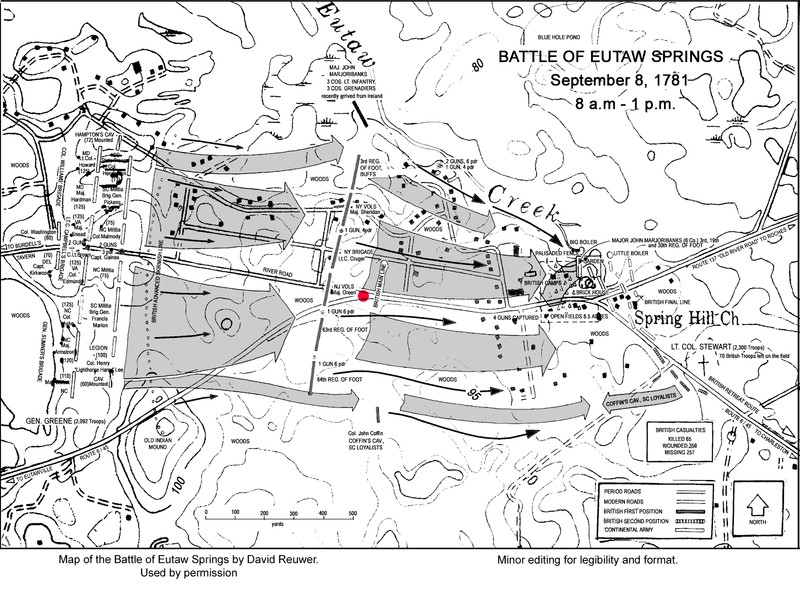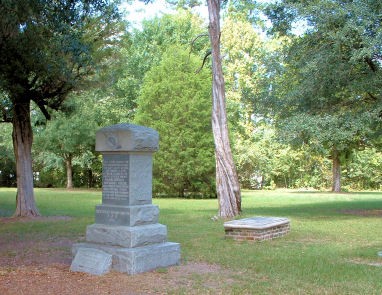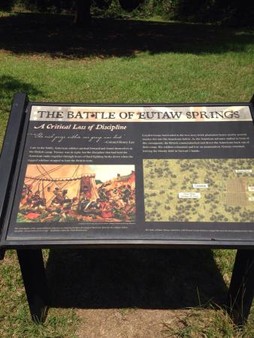Battle of Eutaw Springs
Introduction
Text-to-speech Audio
Images
Battlefield map

Battlefield cemetery

Historical marker sign

Backstory and Context
Text-to-speech Audio
Following a hard-fought victory over American troops at the Battle of Guilford Court House in March of 1781, Lieutenant General Lord Charles Cornwallis retreated east toward Wilmington, NC to replenish supplies.1 Cornwallis then marched north toward Virginia after deciding that the Carolinas could only be defeated after defeating Virginia and other colonies. Major General Nathanael Greene pursued Cornwallis partially before turning south in April 1781 and heading back into South Carolina.2 Cornwallis decided not to pursue Greene’s forces because he assumed that the British army in South Carolina and Georgia could contain Greene’s troops. Following the Battle of the Chesapeake in early September, Steward led a company of 2,000 troops to a camp at Eutaw Springs which is around 50 miles northwest of the city. 3
On September 8, 1781, the battle began when around 40 British troops on a foraging mission were ambushed by the American Lieutenant Colonel “Light-Horse” Harry Lee.4 As Greene advanced on Stewart’s camp, the British commander began a formation west of the camp. Greene placed his North and South Carolina militias in the front of the line and placed the North Carolina Continental Army in the rear. The North Carolina Continental Army was supported by units from Virginia, Maryland, and Delaware.5 As the American army advanced, Stewart ordered his troops to advance and attack. Greene’s army stood their ground and fired upon the Stewart’s troops before succumbing to a bayonet charge.
As the American militia began to retreat, Greene ordered the North Carolina Continental Army to advance forward toward the British troops. Greene was able to halt the advancing British after ordering the Maryland and Virginia Militia to also advance.6 The American army drove the British back to their camp near Eutaw Springs; however, they paused to pillage the British tents rather than pursue the British. British Major John Marjoribanks moved his troops to a nearby brick mansion to be protected and fire on the Americans.7 Greene ordered his troops to assault the mansion; however, his troops were too distracted to carry out the plan. Stewart counterattacked and Greene retreated his forces to the west. Weather prevented Greene from attacking the following day and Stewart withdrew to Charleston with the Americans pursuing them.8 The Americans had 138 killed, 375 wounded, and 41 missing. The British lost 85, had 351 wounded, and 275 were captured or missing. 9 Following the battle, the British surrendered the interior territory and maintained forts along the coast. The majority of fighting shifted back to Virginia, where the British eventually surrendered at Yorktown.
Today, visitors can see the battlefield and cemetery at Eutaw Springs Park, which is three miles east of Eutawville, SC. Take I-95 to exit 98 and head east on SC 6 for 12 miles.10 Signs will indicate that the park is to the left. Visitors can see the grave of Major John Marjoribanks and the battlefield.
